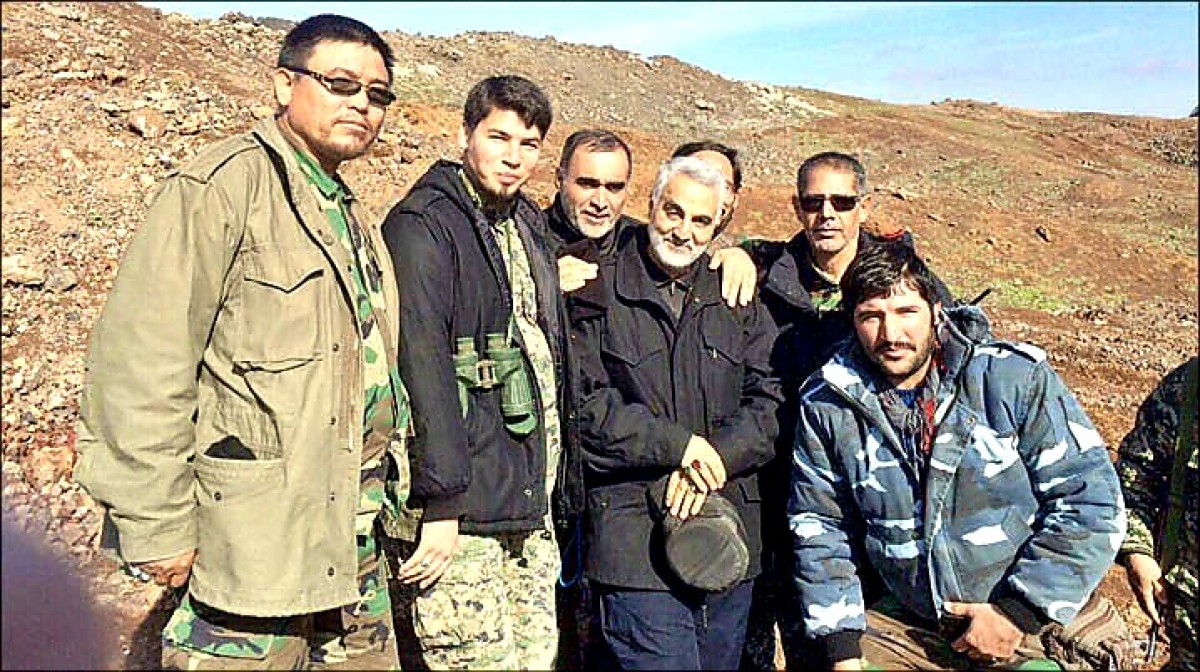Iran’s hero has fallen, and now all Afghans are orphans
The close relation between Iran and Afghan resistance movements dates back to 1979 when Afghanistan was occupied by the Soviet Union. To oust the Russian occupation, all Afghan resistance movement, supported by Iran and regardless of their faith, remained united in their campaign to liberate the motherland. At that time, extensive cooperation took place between Tehran and the Afghan resistance forces.
Following the Soviet withdrawal, a bitter civil war erupted in Afghanistan between the erstwhile allies. To the detriment of the Afghan nation, terrorist organizations, namely al-Qaeda and the Taliban, supported by the Saudi petrodollar and the CIA burgeoned during this period.
With the looming prospect of being totally destructed by the foreign players, Iran stood by the people of Afghanistan to ensure the survival of their country. The late General Soleimani was one of the most influential figures who significantly contributed to the economic development and social progress in Afghanistan.
Gen. Soleimani began his long tenure as the commander of the IRGC’s Quds Force in 1997 which coincided with a period of great tribulation in Afghanistan. In 1999, when it was reported that the Taliban was about to overtake entire Afghanistan, Gen. Souleimani rushed to Afghanistan’s aid. The legendary Tajik leader, Ahmad Shah Massoud, and his small forces were entrenched in the Panjshir Valley as the American and Saudi-backed Taliban sought to wrest control of that strategic valley, thus tightening their sinister reign over Afghanistan. Massoud and his men continued resisting Taliban encroachment with nothing but a dim chance. Soon, a miracle happened: Gen. Soleimani provided the Tajiks with heavy weapons and artillery. Now fully equipped, Massoud’s artilleries had pounded the Taliban position, inflicting terrible causalities upon the enemy, making them flee. Due to his profound knowledge of Afghanistan and its political equations, Haj Qassem Soleimani was the only refuge for the Afghan leaders such as Ahmad Shah Massoud.
Unfortunately, it became widely accepted that it was the 2011 American invasion which brought the end to the Taliban’s tyrannical regime. But the reality is that the Afghan local resistance forces, supported by Haj Qassem Soleimani, managed to liberate key Taliban positions, way before the American attacks. With the emergence of ISIS in Iraq and neighbouring Syria, reports were saying about several fanatic terrorists in southern borders of Afghanistan, pledging their allegiance to the infamous ISIS leader, Abu-Bakr al-Baghdadi. But, at this very historical juncture, Gen. Soleimani assisted the Afghans to put their differences aside, unite their ranks against their common nemesis, the ISIS. He greatly helped to maintain morale among the Afghan fighters in order to resume their sacred war against the American-backed terrorists. Here, Gen. Soleimani adopted a sophisticated strategy of recruiting Afghan volunteers to establish a strong anti-ISIS paramilitary force, known as the Fatemiyoun Brigade. This Afghan force, like other Iranian-backed resistance forces, knew no borders for itself in defending Islam as it fought marvellously both in Afghanistan and Syria. Today, millions of Afghans pay homage to the young fighters in the Fatemiyoun Brigade who successfully defended the holy Islamic shrines near the Syrian capital, Damascus.
In conclusion, one can summarize General Qassem Soleimani’s anti-terrorism activities in Afghanistan into three different categories: A) Supervising the Iranian military advisory missions into Afghanistan. B) Military training cooperation programs. C) Supplying Afghan resistance with military equipment.tance with military equipment.
1
The close relation between Iran and Afghan resistance movements dates back to 1979 when Afghanistan was occupied by the Soviet Union. To oust the Russian occupation, all Afghan resistance movement, supported by Iran and regardless of their faith, remained united in their campaign to liberate the motherland. At that time, extensive cooperation took place between Tehran and the Afghan resistance forces.
Following the Soviet withdrawal, a bitter civil war erupted in Afghanistan between the erstwhile allies. To the detriment of the Afghan nation, terrorist organizations, namely al-Qaeda and the Taliban, supported by the Saudi petrodollar and the CIA burgeoned during this period.
With the looming prospect of being totally destructed by the foreign players, Iran stood by the people of Afghanistan to ensure the survival of their country. The late General Soleimani was one of the most influential figures who significantly contributed to the economic development and social progress in Afghanistan.
Gen. Soleimani began his long tenure as the commander of the IRGC’s Quds Force in 1997 which coincided with a period of great tribulation in Afghanistan. In 1999, when it was reported that the Taliban was about to overtake entire Afghanistan, Gen. Souleimani rushed to Afghanistan’s aid. The legendary Tajik leader, Ahmad Shah Massoud, and his small forces were entrenched in the Panjshir Valley as the American and Saudi-backed Taliban sought to wrest control of that strategic valley, thus tightening their sinister reign over Afghanistan. Massoud and his men continued resisting Taliban encroachment with nothing but a dim chance. Soon, a miracle happened: Gen. Soleimani provided the Tajiks with heavy weapons and artillery. Now fully equipped, Massoud’s artilleries had pounded the Taliban position, inflicting terrible causalities upon the enemy, making them flee. Due to his profound knowledge of Afghanistan and its political equations, Haj Qassem Soleimani was the only refuge for the Afghan leaders such as Ahmad Shah Massoud.
Unfortunately, it became widely accepted that it was the 2011 American invasion which brought the end to the Taliban’s tyrannical regime. But the reality is that the Afghan local resistance forces, supported by Haj Qassem Soleimani, managed to liberate key Taliban positions, way before the American attacks. With the emergence of ISIS in Iraq and neighbouring Syria, reports were saying about several fanatic terrorists in southern borders of Afghanistan, pledging their allegiance to the infamous ISIS leader, Abu-Bakr al-Baghdadi. But, at this very historical juncture, Gen. Soleimani assisted the Afghans to put their differences aside, unite their ranks against their common nemesis, the ISIS. He greatly helped to maintain morale among the Afghan fighters in order to resume their sacred war against the American-backed terrorists. Here, Gen. Soleimani adopted a sophisticated strategy of recruiting Afghan volunteers to establish a strong anti-ISIS paramilitary force, known as the Fatemiyoun Brigade. This Afghan force, like other Iranian-backed resistance forces, knew no borders for itself in defending Islam as it fought marvellously both in Afghanistan and Syria. Today, millions of Afghans pay homage to the young fighters in the Fatemiyoun Brigade who successfully defended the holy Islamic shrines near the Syrian capital, Damascus.
In conclusion, one can summarize General Qassem Soleimani’s anti-terrorism activities in Afghanistan into three different categories: A) Supervising the Iranian military advisory missions into Afghanistan. B) Military training cooperation programs. C) Supplying Afghan resistance with military equipment.tance with military equipment.
1
Abu Mahdi al-Mohandes
Abu Mahdi al-Mohandis
Abu Mahdi al-Muhandis
Afghanistan
Afghans
against
America
American
Americans
anti-Taliban
anti-terrorist
army
Daesh
Gen. Soleimani
general soleimani
General Soleimany
qasem soleimani
Haj Qasem soleimani
Hard revenge
hard revengre
IRAN
iranian
Iranian embassy
Iraq
Iraqi
Iraqi people
ISIS
Martyr Soleimani
military
movements
occupied
poster soleimani
Qasem Soleimani
Qassem soleimani
Russian
Saudi
Saudi Arabia
saudi crims
severe revenge
Soleimani
Soleymani
Tajik
Taliban
Terrorist
terrorists
US
USA
War






Comment
Post a comment for this article